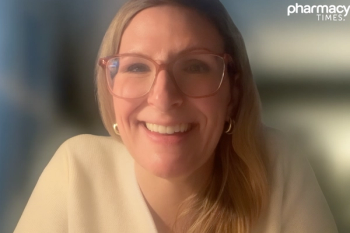
Adverse-Event Management With BTK Inhibitors in MZL
Panelists look at the class effects of BTK inhibitors and share optimal strategies to select therapy and manage toxicities.
Episodes in this series

Transcript:
Bhavesh Shah, RPh, BCOP: Let’s go back to toxicity management. Amit, do you have pharmacists involved in supporting you in treating some of these toxicities? What’s your experience with that?
Amitkumar Mehta, MD: The pharmacists are important in the clinic. There’s no question about it. Right from the thought that I want to prescribe an oral oncolytic to a patient, the pharmacist gets involved. They start right from submitting to the approval for the insurance or, if the patient doesn’t have insurance and we have to apply for grant or other process, all the way to follow-up. An important part of their role is making sure the patient gets the medicine and being aware of drug-drug interactions, like how acalabrutinib interacts with PPIs [proton pump inhibitors]. That’s very important information for my pharmacist to discuss with the patient: make a list of the medications that the patients are on, then assess.
The clinical pharmacists who I have in the clinic also go a step further—we established a program in ibrutinib timing—and ask whether they have risk factors for hypertension or whether they have risk factors for heart disease. We established a protocol in collaboration with our cardiology team to assess the patient and screen them beforehand to see whether they have high risk of atrial fibrillation or any of the heart events. With some of the BTK inhibitors, like ibrutinib, I do ECG [electrocardiogram] and echocardiogram just to be sure we’re not missing that to begin with. The other important part is follow-up. I want to emphasize how important it is for pharmacists to call patients and ask, “How’s it going? You started the drug. Have you missed any doses? Do you have any adverse effects?” That phone call or follow-up itself increases the compliance. Pharmacists’ role at every step is very critical.
Bhavesh Shah, RPh, BCOP: Yes. One of the other enhancements that we’ve made in our model is looking at social determinants of health. There’s patient education, drug interactions, and clinical management that needs to happen, but we forget about the social factors. We screen our patients for food insecurities, housing insecurities, and other factors that we know are directly tied to adherence. There’s food absorption that’s tied to concentrations of the drug, but if a patient can’t get food, how are they going to be able to respond to a drug that’s directly tied to absorption? Having that model enhances the adherence landscape. Javier, do you have any other perspectives on adding anything? Do you do anything different in regard to treating patients with BTK inhibitors?
Javier Munoz, MD, MBA: I agree 100% with Amit. Adverse events from BTK inhibitors include diarrhea, rash, arthralgias, atrial fibrillation, and bleeding. Those are the toxicities that come to mind. These toxicities may lead to treatment discontinuation or dose reductions. Having an alternative, more selective BTK inhibitor that’s tolerable would be quite desirable. Extrapolating data from CLL [chronic lymphocytic leukemia], we have some information about using acalabrutinib after facing intolerance to ibrutinib. In that paper, approximately 70% of patients were able to receive acalabrutinib after facing intolerance to ibrutinib. It’s tempting to extrapolate, but we probably shouldn’t. But most of these toxicities seem to improve over time with ibrutinib, perhaps with the exception of arthralgias and hypertension.
My nurse and our pharmacist are critical team members. They’re my right hand. They help me review concomitant medications and make sure I’m not missing any possible interactions, particularly PPIs. That’s important when it comes to acalabrutinib. I always follow the algorithms or the recommendations regarding dose reductions or dose interruptions in the setting of severe toxicity. We make these decisions as a team and include the patient, keeping the patient front and center when it comes to their symptoms.
Transcript edited for clarity.
Newsletter
Stay informed on drug updates, treatment guidelines, and pharmacy practice trends—subscribe to Pharmacy Times for weekly clinical insights.



















































































































































































































